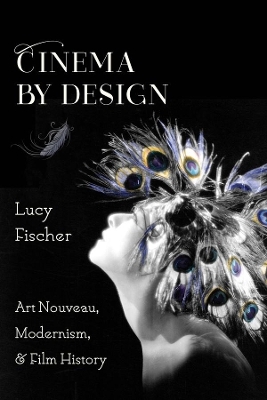
Cinema by Design
Columbia University Press (Verlag)
978-0-231-17503-6 (ISBN)
Art Nouveau thrived from the late 1890s through the First World War. The international design movement reveled in curvilinear forms and both playful and macabre visions and had a deep impact on cinematic art direction, costuming, gender representation, genre, and theme. Though historians have long dismissed Art Nouveau as a decadent cultural mode, its tremendous afterlife in cinema proves otherwise. In Cinema by Design, Lucy Fischer traces Art Nouveau's long history in films from various decades and global locales, appreciating the movement's enduring avant-garde aesthetics and dynamic ideology. Fischer begins with the portrayal of women and nature in the magical "trick films" of the Spanish director Segundo de Chomon; the elite dress and decor design choices in Cecil B. DeMille's The Affairs of Anatol (1921); and the mise-en-scene of fantasy in Raoul Walsh's The Thief of Bagdad (1924). Reading Salome (1923), Fischer shows how the cinema offered an engaging frame for adapting the risque works of Oscar Wilde and Aubrey Beardsley.
Moving to the modern era, Fischer focuses on a series of dramatic films, including Michelangelo Antonioni's The Passenger (1975), that make creative use of the architecture of Antoni Gaudi; and several European works of horror-The Abominable Dr. Phibes (1971), Deep Red (1975), and The Strange Color of Your Body's Tears (2013)-in which Art Nouveau architecture and narrative supply unique resonances in scenes of terror. In later chapters, she examines films like Klimt (2006) that portray the style in relation to the art world and ends by discussing the Art Nouveau revival in 1960s cinema. Fischer's analysis brings into focus the partnership between Art Nouveau's fascination with the illogical and the unconventional and filmmakers' desire to upend viewers' perception of the world. Her work explains why an art movement embedded in modernist sensibilities can flourish in contemporary film through its visions of nature, gender, sexuality, and the exotic.
Lucy Fischer is Distinguished Professor of English and Film Studies at the University of Pittsburgh and the author of eleven books, including Designing Women: Art Deco, Cinema and the Female Form (Columbia, 2003); Body Double: The Author Incarnate in the Cinema (2013); and Art Direction and Production Design (2015). She has held curatorial positions at The Museum of Modern Art and The Carnegie Museum of Art.
Contents List of Illustrations Acknowledgments Introduction 1. Art Nouveau and the Age of Attractions 2. Art Nouveau and American Film of the 1920s: Prestige, Class, Fantasy, and the Exotic 3. Architecture and the City: Barcelona, Gaudi, and the Cinematic Imaginary 4. Art Nouveau, Chambers of Horror, and "The Jew in the Text" 5. Art Nouveau, Patrimony, and the Art World Epilogue: The 1960s and the Art Nouveau Revival Notes Index
| Erscheinungsdatum | 01.04.2017 |
|---|---|
| Reihe/Serie | Film and Culture Series |
| Zusatzinfo | 64 b&w illustrations and 22 color plates |
| Verlagsort | New York |
| Sprache | englisch |
| Maße | 152 x 229 mm |
| Themenwelt | Kunst / Musik / Theater ► Design / Innenarchitektur / Mode |
| Kunst / Musik / Theater ► Film / TV | |
| Kunst / Musik / Theater ► Kunstgeschichte / Kunststile | |
| Sozialwissenschaften ► Kommunikation / Medien ► Medienwissenschaft | |
| ISBN-10 | 0-231-17503-5 / 0231175035 |
| ISBN-13 | 978-0-231-17503-6 / 9780231175036 |
| Zustand | Neuware |
| Haben Sie eine Frage zum Produkt? |
aus dem Bereich


